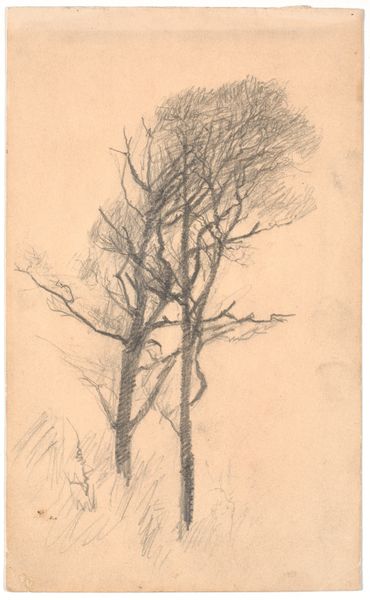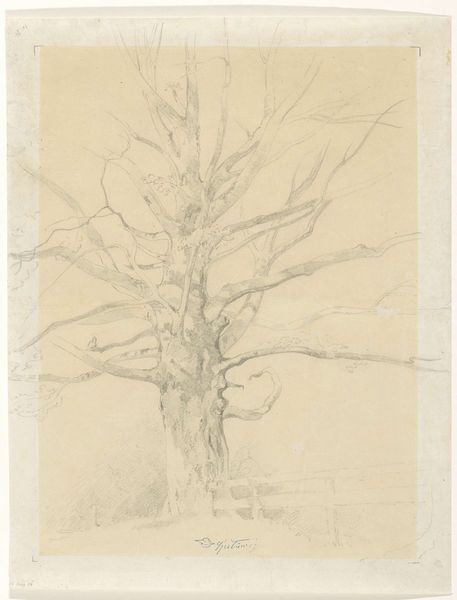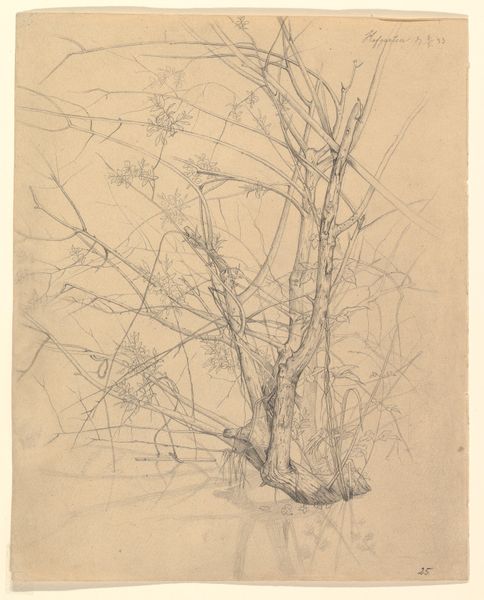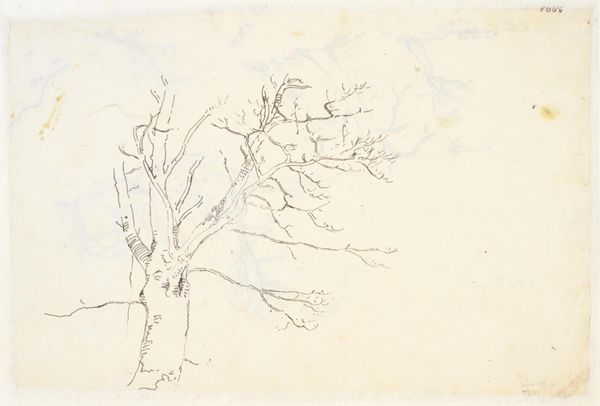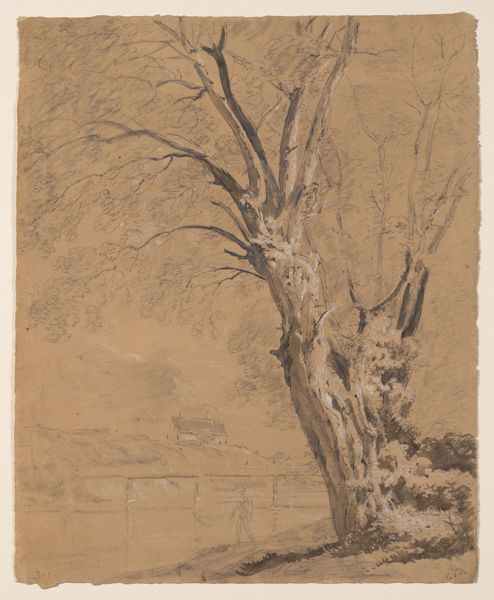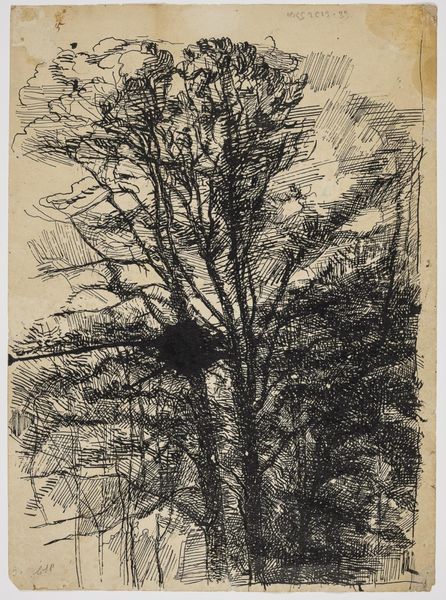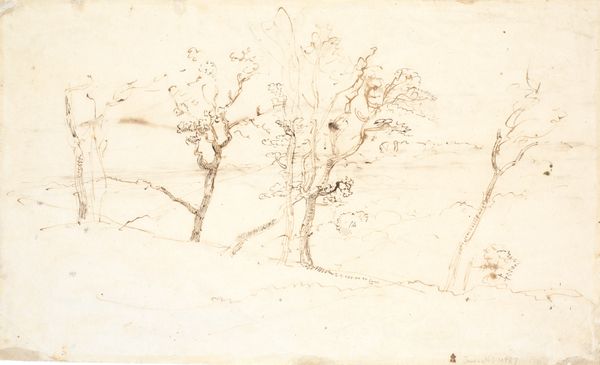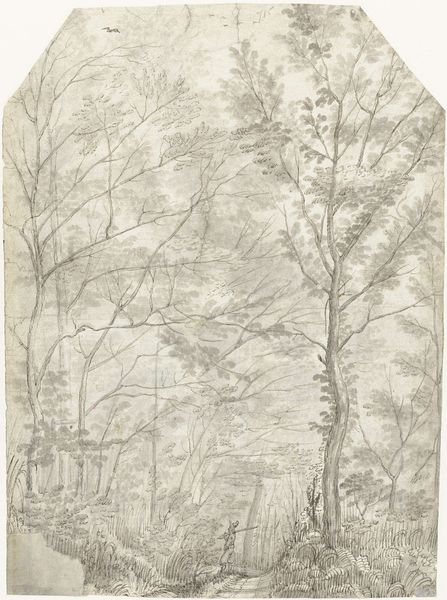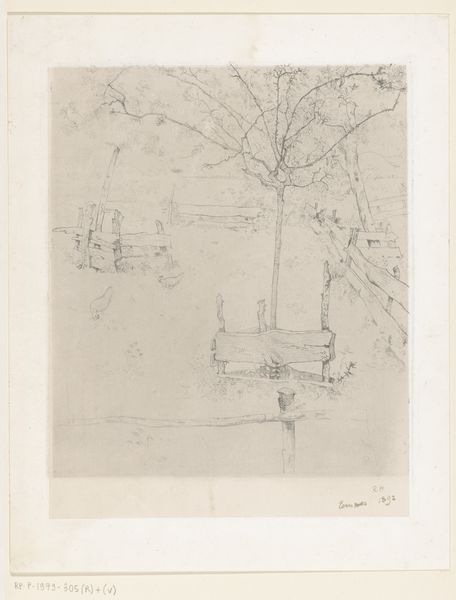
drawing, dry-media, pencil, graphite
#
drawing
#
light pencil work
#
pencil sketch
#
landscape
#
dry-media
#
pencil
#
graphite
#
sketchbook drawing
Dimensions: height 350 mm, width 250 mm
Copyright: Rijks Museum: Open Domain
Editor: This is "Kale boom op een helling" - "Naked tree on a slope" - by Gerrit Willem Dijsselhof, likely made between 1876 and 1924, using graphite and pencil. There’s a quietness to it; a stillness that reminds me of winter. What stands out to you about this simple, almost bare, landscape? Curator: That stillness you perceive is powerful, isn't it? Let's consider the context. Dijsselhof was working during a period of immense social and political upheaval, rapid industrialization. Could this seemingly simple landscape be a commentary on that, a yearning for a simpler, perhaps even romanticized, connection to the earth? Note the lone tree. Does its "nakedness," as you aptly put it, suggest vulnerability? Is it a metaphor for the individual stripped bare in the face of modernity? Editor: I hadn't thought of it that way, but it does feel intentional. I was focused on the simplicity of it, the sparseness. Curator: Exactly. And what does that sparseness evoke? Consider its potential resistance. While urban centers boomed, artists like Dijsselhof were looking at what was being lost, perhaps presenting this type of subject as a symbol for retaining humanity. This return to nature, resisting the alienation of modern life…does that perspective shift your initial understanding? Editor: Definitely. It transforms it from a quiet, simple scene to a potential statement. A quiet rebellion, maybe? Curator: Precisely! And that is where art truly lives - in those shifting sands of interpretation, tied to our own time and understanding. I will look at simple landscape differently. Editor: Thanks, that was truly insightful.
Comments
No comments
Be the first to comment and join the conversation on the ultimate creative platform.
